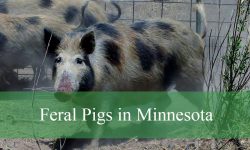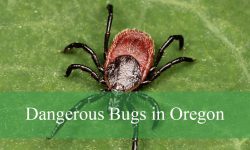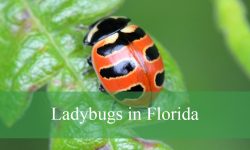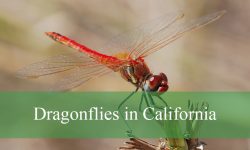There’s something truly magical about watching hummingbirds in Montana — those tiny, iridescent jewels that flash through the air with dazzling speed and precision. Whether you’re in the rugged mountains of the west or the open valleys of the east, the sight of a hummingbird hovering beside a wildflower or feeder can stop you in your tracks. Their energy, color, and elegance make them one of the most captivating birds to observe in the state.
For birdwatchers, Montana offers a unique opportunity to witness several hummingbird species during migration and breeding seasons. From the fiery Rufous to the delicate Calliope, each species brings its own charm to the landscape. Some visit briefly in spring and summer, while others linger in alpine meadows or forest edges throughout the warmer months.
As you spend time outdoors — perhaps sipping coffee on your porch or hiking a wildflower trail — keep your eyes open for a quick glint of emerald, copper, or rose-pink feathers. With a bit of patience and the right garden setup, you can turn your backyard into a haven for these remarkable aerial acrobats.
Common Hummingbirds Found in Montana
Ruby-throated Hummingbird (Archilochus colubris)
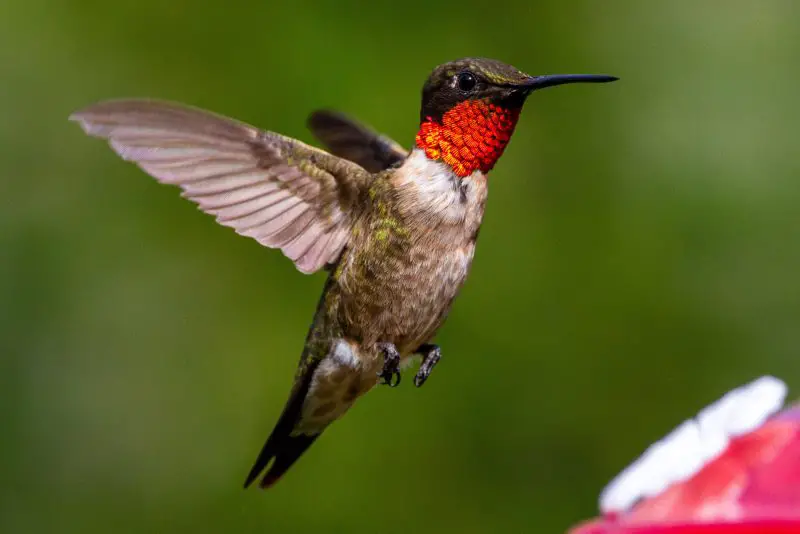
The Ruby-throated Hummingbird is one of the most elegant and recognizable hummingbird species occasionally seen in eastern Montana. Males are instantly identified by their brilliant ruby-red throat that shimmers under sunlight, contrasting with their metallic green back and white underparts. Females, on the other hand, lack the ruby throat and display more subdued green and gray tones, providing camouflage while nesting.
This species is small, measuring about 3 to 3.5 inches in length and weighing less than a nickel. Despite its tiny frame, the Ruby-throated is known for its extraordinary agility in flight, capable of hovering motionless and flying backward with precision. Its wings beat up to 53 times per second, allowing it to dart rapidly between blooms.
Ruby-throated Hummingbirds are solitary and territorial, especially males that aggressively defend feeding and breeding territories. Their diet consists primarily of nectar from tubular flowers such as bee balm, trumpet creeper, and columbine. They also consume small insects and spiders to obtain essential protein, especially during the breeding season.
In Montana, the Ruby-throated Hummingbird is a rare migrant, more often recorded in the eastern regions during late spring and summer. They prefer open woodlands, gardens, and meadows where flowering plants are abundant. During migration, they can cover long distances, even flying nonstop across the Gulf of Mexico on their way to wintering grounds in Central America.
Black-chinned Hummingbird (Archilochus alexandri)
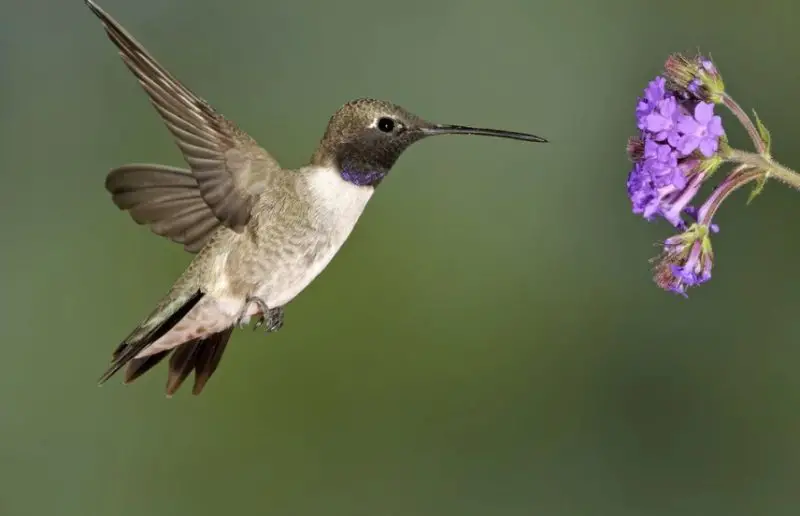
The Black-chinned Hummingbird is a sleek and adaptable species often spotted in the southern and western parts of Montana during the warmer months. Males are distinguished by their black throat adorned with an iridescent purple band that becomes visible in direct light, while females appear pale with greenish backs and whitish underparts. Their slender, slightly curved bills are perfect for probing tubular flowers.
These hummingbirds measure about 3.25 inches in length, making them mid-sized among Montana’s hummingbirds. Their wings create a distinctive low-pitched hum, especially audible when they hover near feeders or flowers. Males perform dramatic pendulum-like courtship displays, diving in wide arcs to attract females during the breeding season.
Black-chinned Hummingbirds feed on nectar from a variety of wildflowers, as well as sugar-water from backyard feeders. They also capture gnats, mosquitoes, and small insects midair or from spider webs. Their diet changes slightly depending on altitude and available floral sources.
In Montana, they are primarily found along river valleys, foothills, and semi-arid scrublands, especially near the Bitterroot Valley and southwestern regions. They adapt well to both natural habitats and human environments, often nesting near houses or gardens with ample flowering plants. Migration takes them southward to Mexico for the winter.
Calliope Hummingbird (Selasphorus calliope)
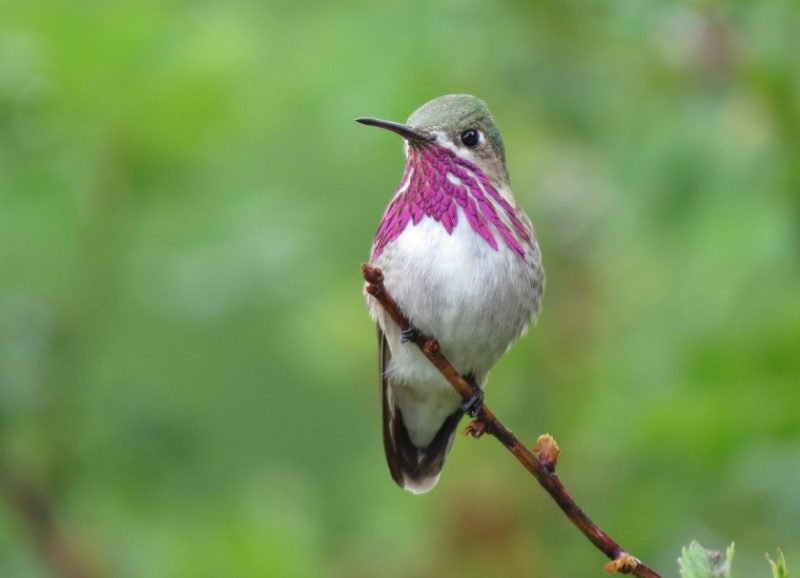
The Calliope Hummingbird is the smallest bird species in North America and the most common breeding hummingbird in Montana. Males are easily identified by their striking magenta streaks on the throat that flare outward like a fan, while females are green above and buffy below with faint streaking. Despite their size—only about 3 inches long—they exude remarkable energy and confidence.
These tiny hummingbirds exhibit incredibly fast wingbeats, estimated at up to 70 per second, and can hover with pinpoint accuracy. Their flight style is characterized by swift darting motions and sudden stops as they feed from flower to flower. Males are fiercely territorial and chase away much larger birds from their chosen feeding spots.
Calliope Hummingbirds feed mainly on nectar from wildflowers such as penstemon, paintbrush, and lupine. They also hunt small insects, which they pluck from midair or from leaf surfaces to supplement their diet. Their small size allows them to thrive in cooler mountain environments where other hummingbirds are less common.
In Montana, Calliope Hummingbirds are widespread in mountain meadows, coniferous forests, and foothills, especially in western and central areas. They arrive in late spring, breed throughout summer, and begin migrating south by early fall. Many follow the Rocky Mountain flyway to wintering grounds in Mexico and Central America.
Rufous Hummingbird (Selasphorus rufus)
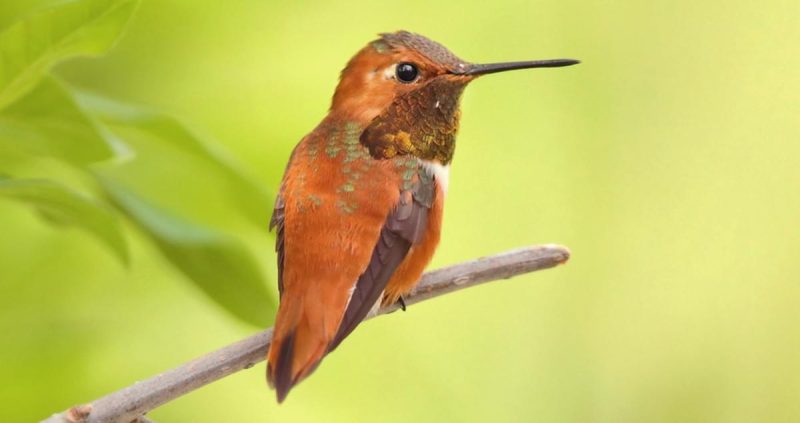
The Rufous Hummingbird is famous for its fiery orange plumage and feisty temperament. Males display vivid coppery-orange backs, rufous flanks, and a gleaming red throat, while females have greenish backs and spotted throats. Their coloration makes them one of the most visually striking hummingbirds to visit Montana during migration.
This species measures about 3.5 inches in length and is known for its exceptional endurance. Rufous Hummingbirds undertake one of the longest migrations of any bird relative to body size—traveling up to 4,000 miles between breeding and wintering grounds. Their wingbeats produce a sharp buzzing sound, especially noticeable as they defend feeding territories.
Rufous Hummingbirds are highly aggressive and dominate feeders or flowering patches they claim. They feed on nectar from native flowers such as Indian paintbrush and scarlet gilia, as well as insects for protein. Their incredible memory allows them to return to the same feeding sites year after year, often within days of their previous visits.
In Montana, Rufous Hummingbirds appear primarily during late summer migration, particularly in the western and mountainous regions. They favor meadows, forest edges, and alpine slopes rich in wildflowers. Their presence adds a burst of color to Montana’s late-season landscapes before they journey south to winter in Mexico.
Broad-tailed Hummingbird (Selasphorus platycercus)
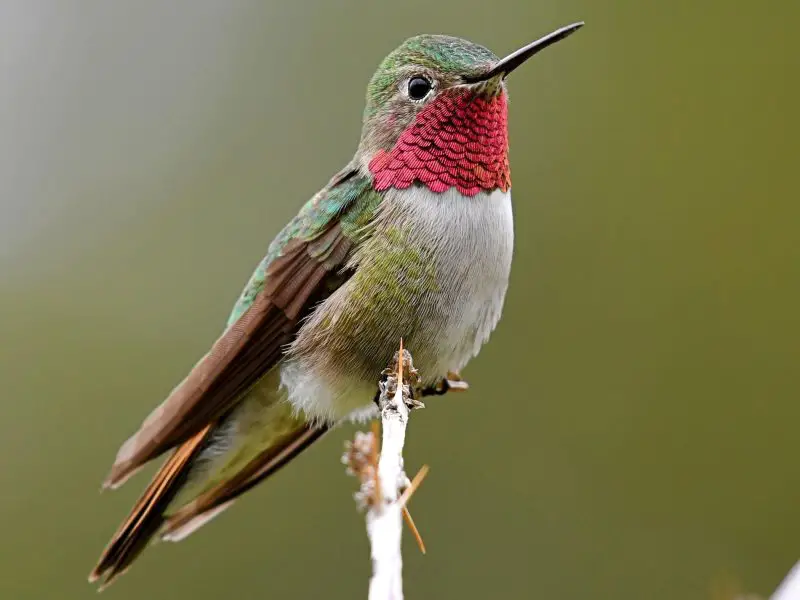
The Broad-tailed Hummingbird is another vibrant visitor to Montana, recognizable by its green back, rosy-red throat in males, and long, rounded tail feathers that produce a distinctive trilling sound in flight. Females lack the red throat and show buffy underparts with spotted flanks. Their appearance is both graceful and colorful, particularly under bright sunlight.
Measuring about 4 inches long, Broad-tailed Hummingbirds are slightly larger than most other species found in Montana. Their wings produce a high-pitched hum that helps birders identify them from a distance. Males perform dramatic aerial displays, swooping and diving to court females in early summer.
Broad-tailed Hummingbirds rely heavily on nectar from wildflowers such as columbine, Indian paintbrush, and larkspur. They also feed on small insects, which provide essential nutrients during breeding and migration. Their feeding habits shift with elevation, as they often nest at high altitudes where blooming flowers are abundant during summer.
In Montana, they are primarily found in the southwestern and mountainous regions, especially in areas with open woodlands and mountain meadows. They breed in cooler, high-elevation habitats and migrate southward by late August. Their adaptability and tolerance for cold nights make them well suited for Montana’s rugged alpine environments.
Anna’s Hummingbird (Calypte anna)
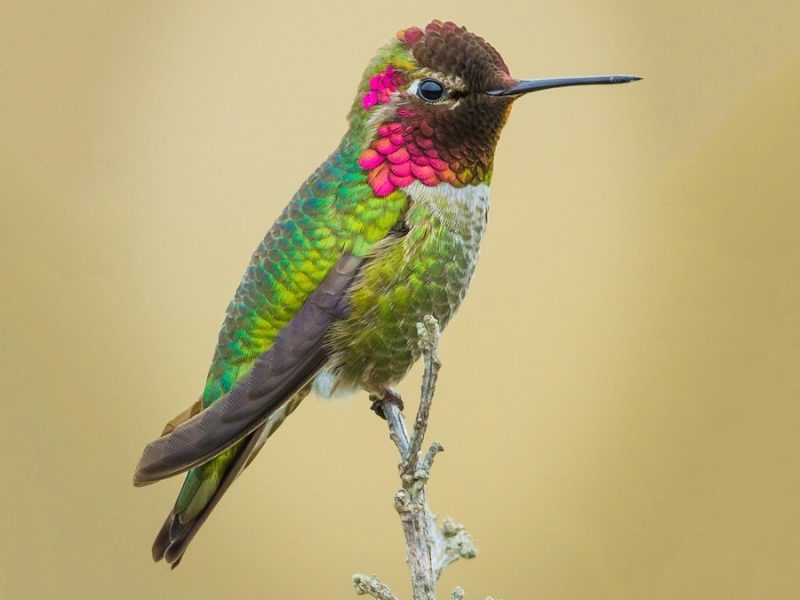
Anna’s Hummingbird is a striking and resilient species occasionally spotted in western Montana, particularly during mild winters or migration periods. Males are famous for their shimmering rose-pink throat and crown, which gleam brightly in sunlight, while females have a greenish back and grayish chest with a small splash of pink on the throat. Their iridescent feathers change hues depending on the light, making them one of the most colorful hummingbirds in North America.
These hummingbirds measure around 4 inches long, slightly larger than the Calliope and Rufous species. Their wings produce a sharp, metallic buzz during flight, and males perform dramatic courtship dives, plummeting from great heights to impress females. Unlike most hummingbirds that migrate, some Anna’s Hummingbirds can endure colder climates and remain in parts of the Pacific Northwest year-round.
Anna’s Hummingbirds feed on nectar from flowering plants such as currants, gooseberries, and manzanitas, as well as sugar-water from feeders. They also eat small insects and spiders for protein. Their long tongues allow them to reach deep into blossoms, efficiently collecting nectar while pollinating plants along the way.
In Montana, they are considered rare visitors, usually seen in the western valleys or near urban gardens where food sources are available. Sightings typically occur in late fall or early winter, as individuals stray from their usual coastal range. Their presence in Montana is a delightful surprise for birdwatchers lucky enough to encounter them during migration.
Costa’s Hummingbird (Calypte costae)
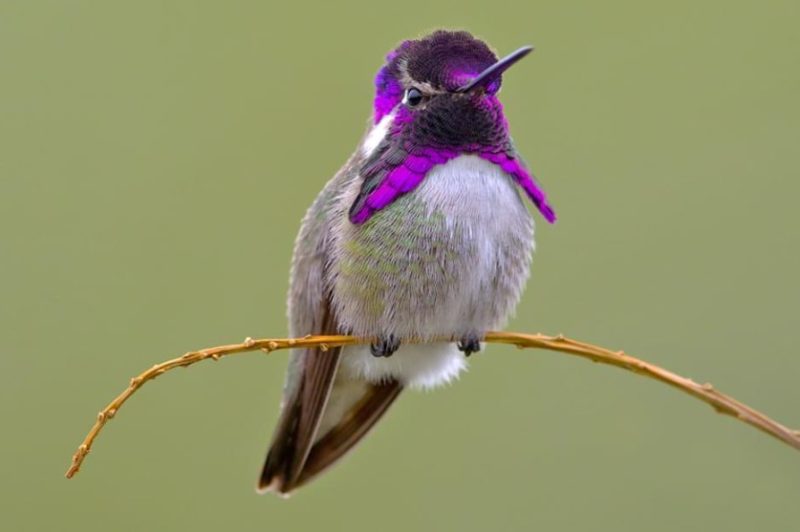
The Costa’s Hummingbird is a desert native that occasionally wanders into Montana as a rare vagrant, particularly during spring or summer. Males are easily recognized by their vibrant violet-purple crown and throat, which flare outward like a collar, while females appear pale gray-green with a whitish underside. Their compact body and short tail give them a unique, rounded profile compared to other hummingbirds.
Measuring about 3.5 inches long, this species is among the smaller hummingbirds seen in the western United States. Males produce a distinctive high-pitched whistle during their territorial displays, which involves rapid diving flights and hovering performances. Their flight is agile and direct, allowing them to maneuver quickly through flowering vegetation.
Costa’s Hummingbirds primarily feed on nectar from desert-adapted plants such as chuparosa and ocotillo but will also sip from backyard feeders if available. Insects, especially tiny gnats and spiders, form a small portion of their diet, providing vital protein for energy and feather maintenance.
In Montana, sightings are extremely uncommon and generally limited to southern or southwestern areas during migration. They are considered accidental visitors, likely displaced from their typical range in the southwestern deserts of Arizona, Nevada, and California. When present, they are usually seen in dry, open habitats with scattered flowering shrubs or near garden feeders.
Allen’s Hummingbird (Selasphorus sasin)
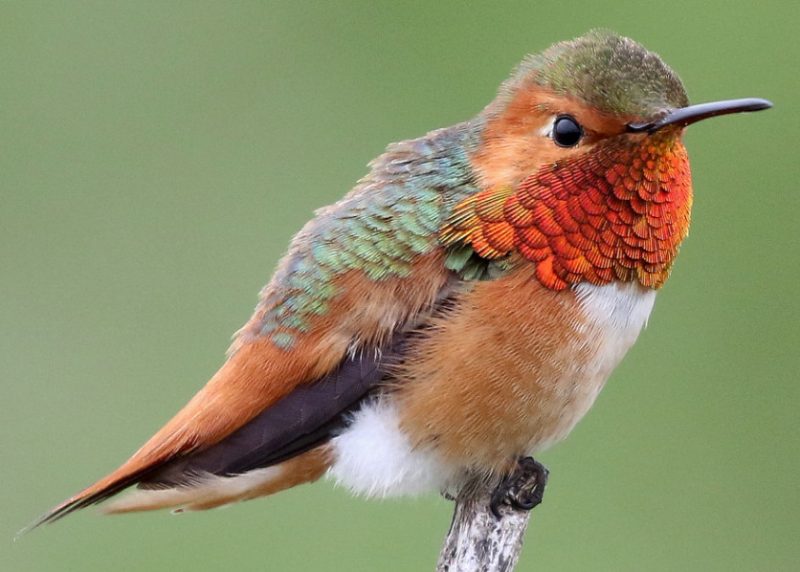
Allen’s Hummingbird is a rare and colorful vagrant in Montana, best known for its close resemblance to the Rufous Hummingbird. Males exhibit a brilliant orange back and flanks with a glowing red-orange throat, while females are mostly green above with rufous-tinted sides. Careful observation of the tail feathers—narrower and more tapered than those of the Rufous—is often the best way to tell them apart.
This species measures about 3.5 inches in length and is incredibly agile in flight. Males perform dazzling U-shaped courtship dives accompanied by a rapid metallic buzz, displaying their bright plumage to nearby females. Their wingbeats are quick and sharp, allowing them to hover effortlessly while feeding or defending territory.
Allen’s Hummingbirds feed primarily on nectar from coastal flowers, including fuchsia, sage, and columbine. They also catch small flying insects for protein. Like most hummingbirds, they have excellent spatial memory, allowing them to revisit the same flowers or feeders multiple times each day.
In Montana, Allen’s Hummingbird is an exceptionally rare visitor, usually reported in the western and southwestern regions during migration. Most records occur in late summer when young birds disperse northward before heading south to wintering areas in Mexico. Their brief presence adds excitement to Montana’s hummingbird-watching season, offering a glimpse of a species more commonly associated with the Pacific coast.
How to Attract Hummingbirds in Montana
1. Provide Nectar Feeders
Setting up nectar feeders is one of the easiest and most effective ways to attract hummingbirds in Montana. Use a mixture of 1 part sugar to 4 parts water, and change the solution every 2–3 days during warm weather to prevent fermentation. Hang feeders in shaded areas near flowers or shrubs to keep the nectar cool and fresh. Avoid using red dyes — the color of the feeder itself is enough to attract them.
2. Plant Native Flowers
Hummingbirds are naturally drawn to bright, tubular flowers that produce abundant nectar. In Montana, ideal choices include columbine, bee balm, scarlet gilia, penstemon, trumpet vine, and lupine. Plant a variety of species that bloom from spring through late summer to provide a continuous food source. Clusters of red, orange, and pink flowers are especially attractive to hummingbirds.
3. Create Shelter and Perching Areas
Hummingbirds need safe resting spots between feeding sessions. Planting native shrubs, trees, and dense vegetation provides protection from predators and harsh weather. They often perch on thin branches or wires to rest and observe their territory. Consider leaving small natural areas around your garden where they can feel secure.
4. Add a Water Source
Though hummingbirds rarely bathe like other birds, they enjoy misting water and shallow moving streams. A mister, dripper, or small fountain can make your yard more inviting. The sound and sparkle of moving water often catch their attention during flight.
5. Keep the Habitat Safe
Avoid pesticides or insecticides, as hummingbirds consume small insects for protein. Maintain clean feeders to prevent mold and disease. If possible, place multiple feeders around your property to reduce territorial disputes among aggressive species like the Rufous Hummingbird.
6. Time Your Garden for Migration
Because Montana’s hummingbirds migrate seasonally, timing your flowers and feeders is key. Plant early-blooming flowers for spring arrivals and late-blooming varieties for fall migrants. Leaving feeders up until the end of September ensures that even late travelers find nourishment before beginning their long journey south.
FAQs About Hummingbirds in Montana
What time of year do hummingbirds appear in Montana?
Hummingbirds typically arrive in Montana from late April through early May, depending on weather and elevation. The Calliope and Rufous Hummingbirds are among the first to appear, followed by Black-chinned and Broad-tailed species. Most hummingbirds depart the state by late August or early September as they migrate south to their wintering grounds in Mexico and Central America.
Which hummingbird species are most common in Montana?
The Calliope Hummingbird is the most common and widespread breeder in Montana. It thrives in mountain meadows and forest edges during summer. Rufous Hummingbirds are also frequent visitors, particularly during migration, while Black-chinned and Broad-tailed Hummingbirds appear in the southern and western parts of the state. Ruby-throated Hummingbirds are rare and usually seen only in the easternmost regions.
Do hummingbirds migrate through Montana?
Yes. Montana lies along an important migratory corridor for several hummingbird species, especially Rufous and Calliope Hummingbirds. They travel north from Mexico in spring to breed and return south by late summer. Migration routes often follow mountain ridges and river valleys, where food sources such as wildflowers and insects are abundant.
When should I put out hummingbird feeders in Montana?
It’s best to place feeders outside in mid-April and keep them up until late September. Early placement ensures food availability for returning migrants, while late removal supports those preparing for migration. In higher elevations or colder areas, feeders can be put out slightly later in spring and kept up a bit longer into fall.
What do hummingbirds eat in Montana?
Hummingbirds feed primarily on flower nectar for energy and small insects for protein. In Montana, they are often seen feeding from native wildflowers like Indian paintbrush, penstemon, and columbine. Many also visit sugar-water feeders. The best nectar solution is made by mixing 1 part white sugar with 4 parts water — without coloring or additives.
Are hummingbirds protected in Montana?
Yes, all hummingbird species are protected under the Migratory Bird Treaty Act. It is illegal to harm, capture, or disturb them or their nests. Birdwatchers and homeowners should provide food and habitat safely without interfering with natural nesting or migration behaviors.


